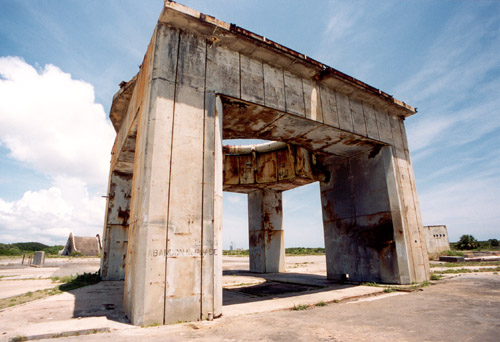
 |
Complex 34 launch pad |
 |
On January 27, 1967, a simulated flight was to be performed with the Apollo 204 vehicle, which should
have later been launched as Apollo 1. This test, known as an "Overall Test Plugs Out", simulated an
actual flight as closely as possible. A countdown would be conducted, all communication and
instrumentation systems would be activated, and the umbilical that connected the space vehicle
to the launch pad would be disconnected.
The launch vehicle was in place on the launch pad at
Complex 34. In the capsule were Virgil I. "Gus" Grissom, Edward H. White II, and Roger B. Chaffee. Having entered
the capsule after one o'clock P.M., the three were still there at 6:30 P.M. with the countdown stalled at T-10 minutes
(communications problems had plagued the test all day). Shortly after 6:30 P.M., disaster struck. A small electrical fire,
fed by nylon netting and the 16.2 p.s.i. of pure oxygen in the cabin, reached a blaze. Less than a minute
after the initial report of a fire in the capsule, the crew of Apollo 1 was dead.
The first manned Apollo mission (Apollo 7) was later
launched from Complex 34. The Complex was deactivated shortly thereafter. Today, little more than the blockhouse,
the ruins of a few support buildings, and the launch pedestal are left to bear silent witness to the sacrifice of the first
Apollo astronauts.

